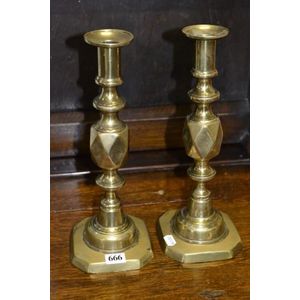Austro-Hungarian Jugendstil Silver Cake Tray
An Austro-Hungarian Jugendstil.800 silver cake tray, circa 1900, with 1872-1922 Dianokopf standard, faint maker's marks, the circular tray with pierced and embossed vegetal motifs, a high set, sinuous arching handle of fixed form with channel grooves and floral mounts, hallmarked to edge of tray, silver weight 467gr, height 29 cm, diameter: 28 cm
You must be a subscriber, and be logged in to view price and dealer details.
Subscribe Now to view actual auction price for this item
When you subscribe, you have the option of setting the currency in which to display prices to $Au, $US, $NZ or Stg.
This item has been sold, and the description, image and price are for reference purposes only.
- Embossed / Repousse - Embossing, also known as repousse, is the technique of decorating metal with raised designs, by pressing or beating out the design from the reverse side of the object.It is the opposite of chasing, where the decoration is applied from the front. An embossed or repoussed object may have chasing applied to finish off the design.
- Circa - A Latin term meaning 'about', often used in the antique trade to give an approximate date for the piece, usually considered to be five years on either side of the circa year. Thus, circa 1900 means the piece was made about 1900, probably between 1895 and 1905. The expression is sometimes abbreviated to c.1900.
- Jugendstil - The German and Austrian version of the Art Nouveau style and the other related styles that were expanding everywhere in Europe in the early 20th century.
The name was derived from the title of the Munich cultural magazine, "Die Jugend", with the addition of "Stil", which translates as "youth style".
Jugendstil encompasses all forms of architecture and art: industrial facilities, elevated-train systems, villas, churches, as well as the interior design of bars and coffee houses
In Austria, Jugendstil developed also in various ways, mainly under the effect of the Viennese Secession and of the Wiener Werkstätte. - Hallmarks - A mark stamped on articles of precious metals in Britain, since the 14th century, certifying their purity. It derives its name from the Guild Hall of the Goldsmiths' Company, who recieved its Charter in 1327 giving it the power to assay (test the purity) and mark articles of gold and silver.
The hallmark will consist of several marks, including the:
- silver standard mark, indicating the purity of the metal. Sterling silver is .925 pure silver.
- the city mark indicating the city in which it was assayed eg London, Birmingham, York etc.
- the date mark, usually a letter of the alphabet in a particular font and case,
- a duty mark, indicating whether duty had been paid to the crown, and only in use from 1784 to 1890
The piece may include an additional mark, the maker's mark, although not forming part of the hallmark, will be located in the vicinity of the hallmarks.
Sometimes silver plated items will bear faux hallmarks, often confusing those not familiar with silver markings.
This item has been included into following indexes:
Visually similar items

Pair of Queen Victoria Diamond Jubilee brass candlesticks
Sold by
in
for
You can display prices in $Au, $US, $NZ or Stg.

A carved Indian ivory tusk depicting lions and elephants in battle, fitted as a lamp. Length 52 cm.
Sold by
in
for
You can display prices in $Au, $US, $NZ or Stg.

Ornate gilt framed mirror, 65 cm x 53 cm approx.
Sold by
in
for
You can display prices in $Au, $US, $NZ or Stg.

A pair of fine quality Japanese Meiji period ivory birds, fine intricate detail, inlaid horn eyes both with signed seal marks and mounted on rustic wood plinths length 22 cm
Sold by
in
for
You can display prices in $Au, $US, $NZ or Stg.
